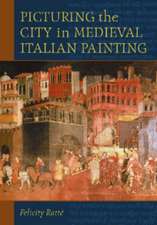An Analysis of Yasser Tabbaa's The Transformation of Islamic Art During the Sunni Revival: The Macat Library
Autor Bilal Badaten Limba Engleză Paperback – 21 feb 2018
Din seria The Macat Library
-
 Preț: 47.21 lei
Preț: 47.21 lei -
 Preț: 47.49 lei
Preț: 47.49 lei -
 Preț: 48.22 lei
Preț: 48.22 lei -
 Preț: 49.34 lei
Preț: 49.34 lei -
 Preț: 47.42 lei
Preț: 47.42 lei -
 Preț: 47.20 lei
Preț: 47.20 lei -
 Preț: 46.98 lei
Preț: 46.98 lei -
 Preț: 47.37 lei
Preț: 47.37 lei -
 Preț: 47.29 lei
Preț: 47.29 lei -
 Preț: 47.30 lei
Preț: 47.30 lei -
 Preț: 47.23 lei
Preț: 47.23 lei -
 Preț: 64.87 lei
Preț: 64.87 lei -
 Preț: 47.30 lei
Preț: 47.30 lei -
 Preț: 47.23 lei
Preț: 47.23 lei -
 Preț: 48.22 lei
Preț: 48.22 lei - 30%
 Preț: 32.99 lei
Preț: 32.99 lei -
 Preț: 47.42 lei
Preț: 47.42 lei -
 Preț: 47.30 lei
Preț: 47.30 lei -
 Preț: 47.26 lei
Preț: 47.26 lei -
 Preț: 47.65 lei
Preț: 47.65 lei -
 Preț: 47.37 lei
Preț: 47.37 lei -
 Preț: 47.08 lei
Preț: 47.08 lei -
 Preț: 47.18 lei
Preț: 47.18 lei -
 Preț: 47.30 lei
Preț: 47.30 lei -
 Preț: 47.27 lei
Preț: 47.27 lei -
 Preț: 47.99 lei
Preț: 47.99 lei -
 Preț: 47.23 lei
Preț: 47.23 lei -
 Preț: 47.02 lei
Preț: 47.02 lei -
 Preț: 47.23 lei
Preț: 47.23 lei -
 Preț: 47.42 lei
Preț: 47.42 lei -
 Preț: 47.30 lei
Preț: 47.30 lei -
 Preț: 47.13 lei
Preț: 47.13 lei -
 Preț: 47.10 lei
Preț: 47.10 lei -
 Preț: 47.20 lei
Preț: 47.20 lei -
 Preț: 46.98 lei
Preț: 46.98 lei -
 Preț: 47.18 lei
Preț: 47.18 lei -
 Preț: 47.30 lei
Preț: 47.30 lei -
 Preț: 47.15 lei
Preț: 47.15 lei -
 Preț: 47.29 lei
Preț: 47.29 lei -
 Preț: 64.24 lei
Preț: 64.24 lei -
 Preț: 46.98 lei
Preț: 46.98 lei -
 Preț: 47.40 lei
Preț: 47.40 lei -
 Preț: 47.87 lei
Preț: 47.87 lei -
 Preț: 47.42 lei
Preț: 47.42 lei -
 Preț: 47.33 lei
Preț: 47.33 lei -
 Preț: 47.40 lei
Preț: 47.40 lei -
 Preț: 47.40 lei
Preț: 47.40 lei -
 Preț: 46.98 lei
Preț: 46.98 lei -
 Preț: 47.20 lei
Preț: 47.20 lei -
 Preț: 47.21 lei
Preț: 47.21 lei
Preț: 47.49 lei
Nou
Puncte Express: 71
Preț estimativ în valută:
9.09€ • 9.43$ • 7.60£
9.09€ • 9.43$ • 7.60£
Carte disponibilă
Livrare economică 22 februarie-08 martie
Livrare express 11-15 februarie pentru 15.59 lei
Preluare comenzi: 021 569.72.76
Specificații
ISBN-13: 9781912284672
ISBN-10: 1912284677
Pagini: 112
Dimensiuni: 129 x 198 x 7 mm
Greutate: 0.14 kg
Ediția:1
Editura: Taylor & Francis
Colecția Macat Library
Seria The Macat Library
Locul publicării:Oxford, United Kingdom
ISBN-10: 1912284677
Pagini: 112
Dimensiuni: 129 x 198 x 7 mm
Greutate: 0.14 kg
Ediția:1
Editura: Taylor & Francis
Colecția Macat Library
Seria The Macat Library
Locul publicării:Oxford, United Kingdom
Cuprins
Ways in to the Text Who was Yasser Tabbaa? What does The Transformation of Islamic Art During the Sunni Revival Say? Why does The Transformation of Islamic Art During the Sunni Revival Matter? Section 1: Influences Module 1: The Author and the Historical Context Module 2: Academic Context Module 3: The Problem Module 4: The Author's Contribution Section 2: Ideas Module 5: Main Ideas Module 6: Secondary Ideas Module 7: Achievement Module 8: Place in the Author's Work Section 3: Impact Module 9: The First Responses Module 10: The Evolving Debate Module 11: Impact and Influence Today Module 12: Where Next? Glossary of Terms People Mentioned in the Text Works Cited
Descriere
Tabbaa’s Transformation offers an innovative approach to understanding the profound changes undergone by Islamic art and architecture during the often neglected Medieval Islamic period. Tabbaa offers a timely and thought-provoking alternative to conventional essentialist, positivist and ethno-narrative interpretations of Islamic art.


